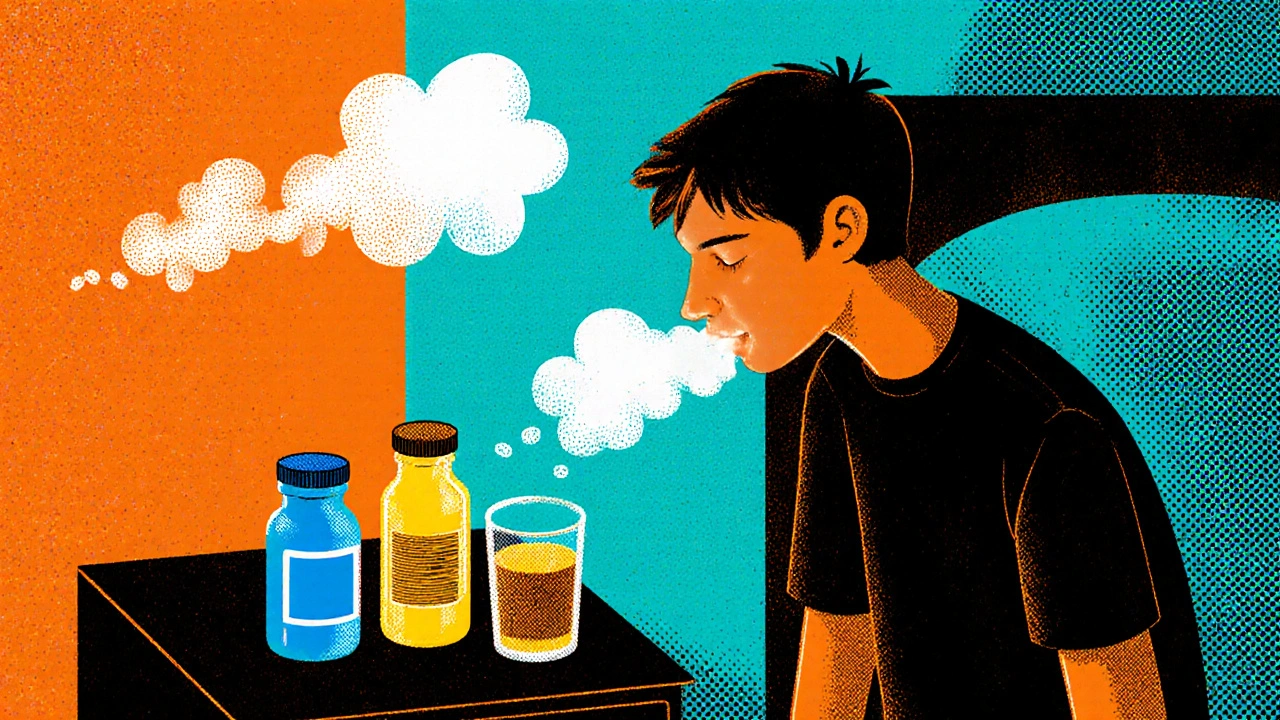Respiratory Depression: Causes, Risks, and What You Need to Know
When your breathing slows down too much, it’s called respiratory depression, a condition where the body doesn’t take in enough oxygen or expel enough carbon dioxide. Also known as breathing suppression, it’s not just a side effect—it’s a medical emergency that can turn fatal in minutes. This isn’t something that happens to "other people." It can happen to anyone taking prescription painkillers, sleeping pills, or mixing alcohol with medication—even if they’re following their doctor’s instructions.
Most cases of respiratory depression are tied to opioids, a class of drugs used for pain relief, including morphine, oxycodone, and fentanyl. These drugs act on the brainstem, the part that controls automatic breathing. When they over-sedate that area, breathing becomes shallow, slow, or stops entirely. Sedatives, like benzodiazepines or barbiturates, do the same thing. And when you mix them—say, a painkiller with a sleep aid or alcohol—the effect multiplies. There’s no safe middle ground here. Even small amounts can be deadly if your body isn’t used to them.
Who’s most at risk? Older adults, people with lung diseases like COPD, those taking multiple central nervous system depressants, or anyone who’s recently stopped using opioids and then takes the same dose again. Tolerance drops fast. A dose that felt fine last month could be lethal now. Signs aren’t always obvious: drowsiness, confusion, slow or irregular breathing, blue lips or fingertips, or not waking up easily. If you’re caring for someone on strong meds, watch for these. Don’t wait for them to say something’s wrong.
The good news? Respiratory depression is preventable. Knowing the risks means you can ask better questions. Talk to your doctor about alternatives to opioids. Ask if naloxone—an overdose reversal drug—should be kept on hand. Never crush pills or take more than prescribed. And if you’re using sedatives, avoid alcohol completely. This isn’t about fear—it’s about awareness. The posts below cover real cases, drug interactions, and safety steps you won’t find in pamphlets. From how fentanyl patches can quietly shut down breathing to why some pain meds are riskier than others, you’ll get clear, no-fluff facts that could save a life.

- Oct 25, 2025
- Posted by Cillian Osterfield
Dangers of Mixing Sedatives: How CNS Depression Can Be Fatal
Learn why mixing sedatives like opioids, benzodiazepines, alcohol, and sleep meds can cause deadly CNS depression and how to avoid it.
Categories
- Health and Wellness (57)
- Medications (38)
- Health and Medicine (22)
- Pharmacy Services (10)
- Mental Health (5)
- Health and Career (2)
- Medical Research (2)
- Business and Finance (2)
- Health Information (1)
Latest Posts
©2025 heydoctor.su. All rights reserved





